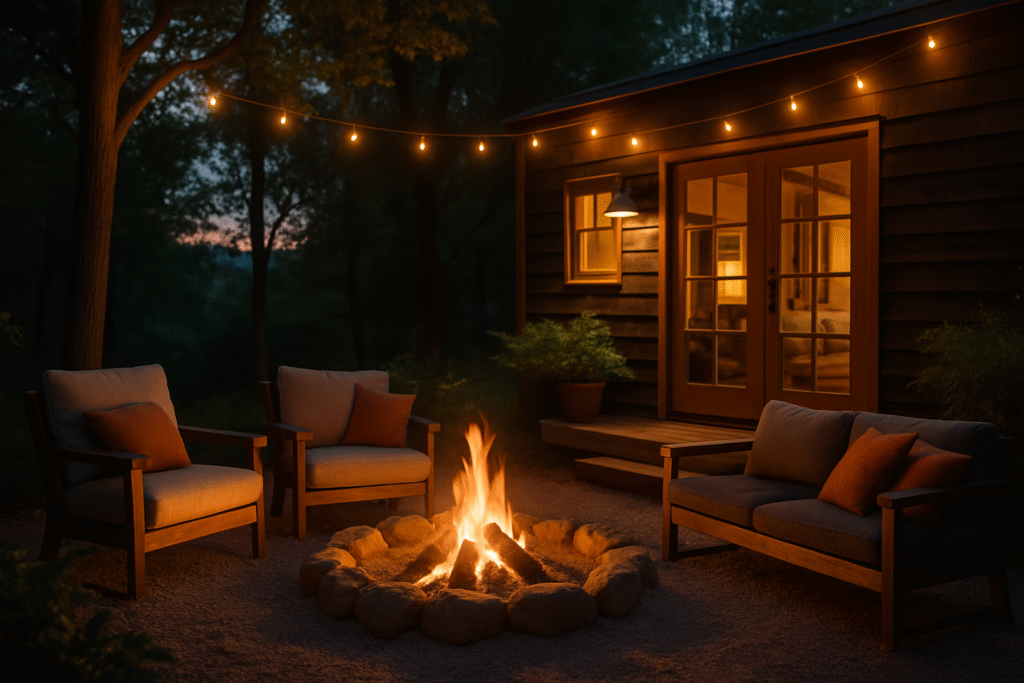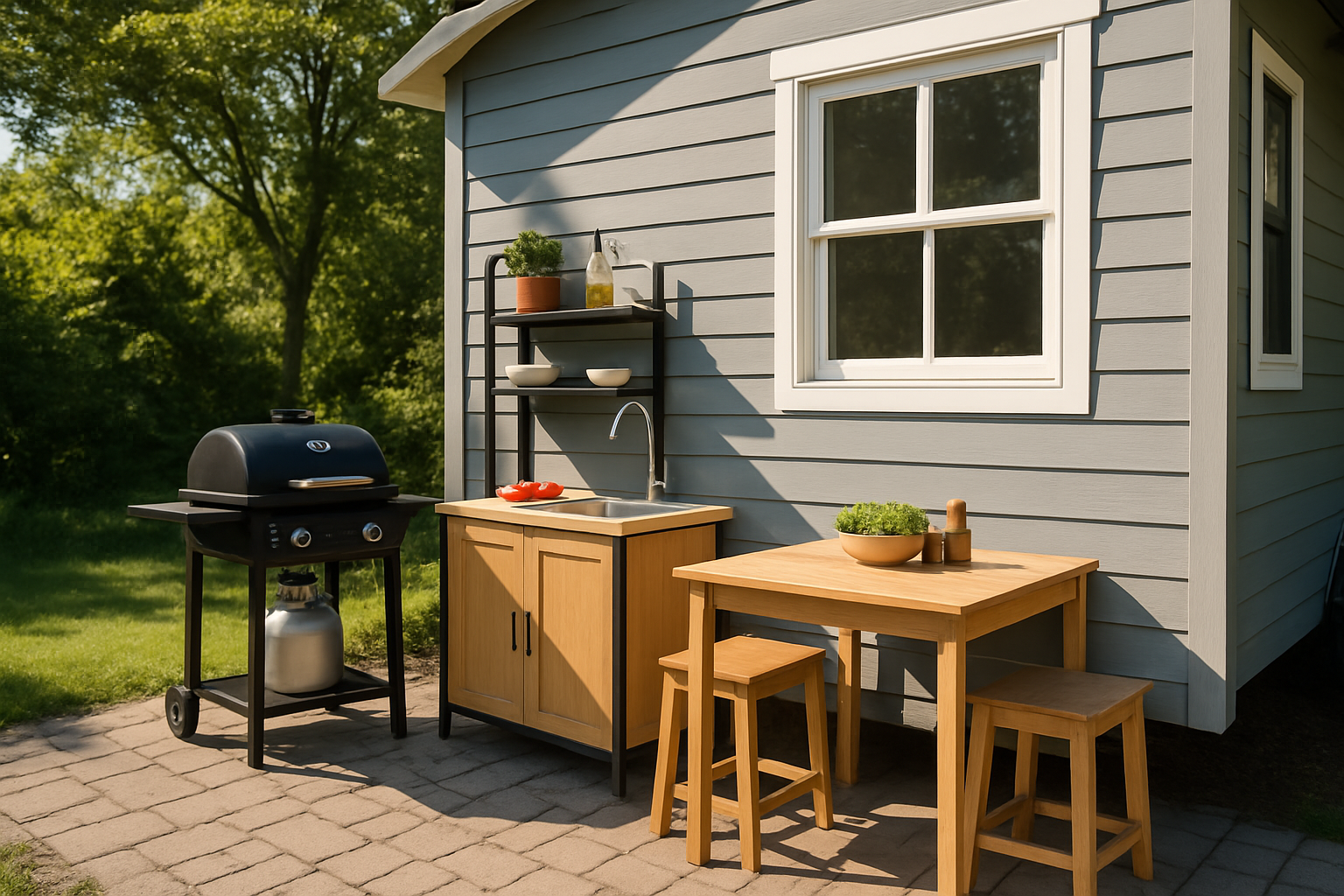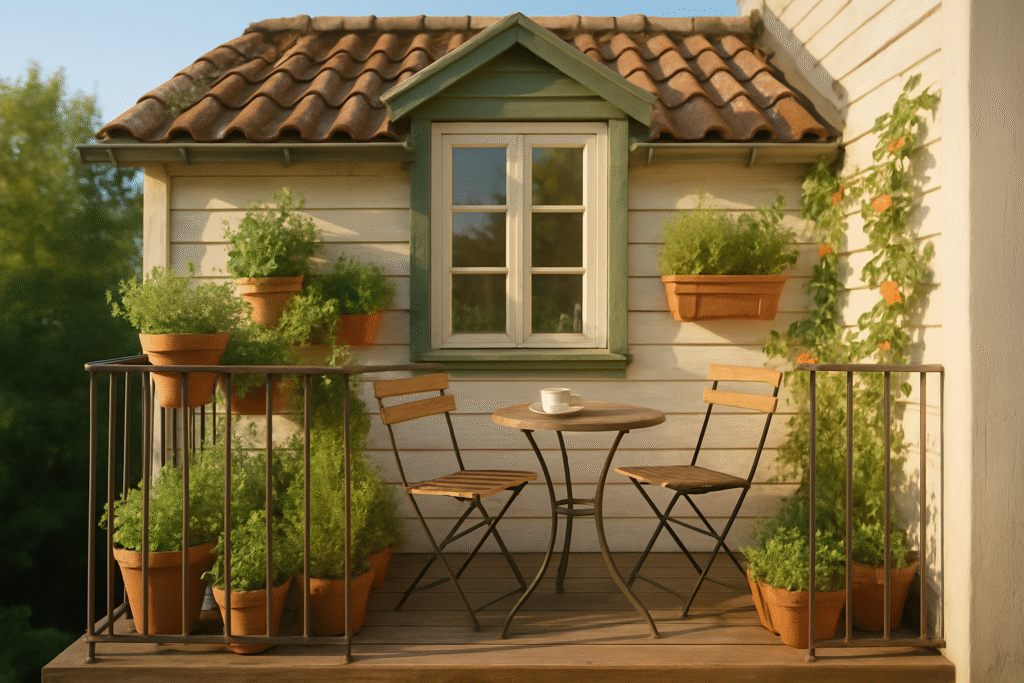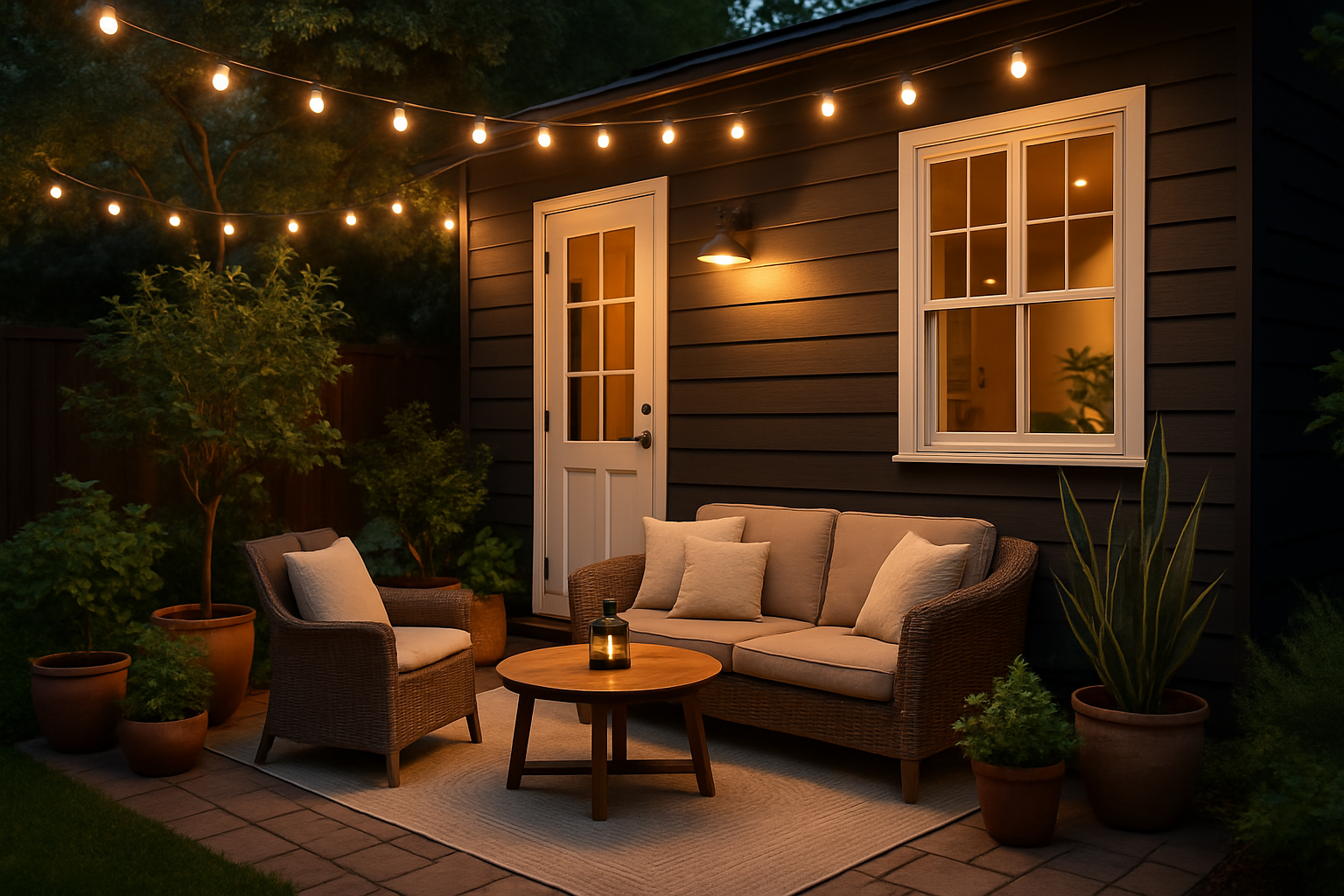In the world of tiny living, where every square foot inside is meticulously planned, it’s easy to overlook the immense potential of the outdoor space. Yet, for tiny house dwellers, the exterior isn’t just an afterthought; it’s a vital extension of their living area, offering opportunities for relaxation, entertainment, and even sustenance. Maximizing your tiny home’s outdoor footprint through thoughtful tiny house outdoor living ideas and innovative tiny house gardening solutions can dramatically enhance your quality of life, providing fresh air, natural beauty, and additional functional zones. This comprehensive guide delves into creative strategies for transforming your compact exterior into a vibrant, multi-purpose oasis, ensuring every inch serves a purpose, from cozy patios to flourishing vertical gardens.
Table of Contents
Optimizing your tiny home’s outdoor space is crucial for embracing a holistic tiny living lifestyle. Beyond mere aesthetics, well-designed outdoor areas contribute significantly to mental well-being, offering a connection to nature and a respite from confined interiors. Just as interior design trends like those discussed in our article on Tiny House Interior Design Trends 2025: Style Meets Functionality focus on maximizing comfort and utility within limited indoor square footage, outdoor design extends this philosophy to the exterior. Whether you’re seeking serene spots for morning coffee, a functional area for outdoor cooking, or a productive garden to grow your own food, the possibilities are endless.
We’ll explore how to leverage every corner, from small decks and porches to surrounding landscapes, integrating elements that are both beautiful and highly practical. Our focus will be on actionable tiny house landscaping small spaces techniques and ingenious tiny house patio design concepts that cater specifically to the unique challenges and opportunities of tiny homes.
This article will serve as your ultimate resource for cultivating an inspiring outdoor environment around your tiny house. We’ll cover everything from selecting the right plants for container gardening tiny house setups and implementing efficient vertical gardens tiny house designs, to crafting inviting tiny house porch ideas and enhancing overall tiny house curb appeal outdoor. By the end, you’ll have a wealth of knowledge and practical tips to design an outdoor space that not only complements your tiny home but also significantly expands your usable living area, fostering a deeper connection with the outdoors and enriching your tiny living experience. Get ready to unlock the full potential of your tiny home’s exterior!

Maximizing Your Outdoor Footprint: Decks, Patios, and Porches
For those who enjoy a hands-on approach, many of these outdoor enhancements can be tackled as DIY projects, further personalizing your space and potentially saving costs. Our article on DIY Tiny House Projects: Personalize Your Small Space on a Budget offers valuable insights and inspiration for such endeavors.
Designing the Perfect Deck or Patio
When planning a deck or patio for your tiny house, consider its primary function. Will it be a dining area, a relaxation spot, or a combination of both? For dining, a compact, foldable table and chairs can be ideal, easily stowed away when not in use. For lounging, consider built-in benches with storage underneath, or comfortable, weather-resistant cushions that can be brought inside. The material choice is also important: wood decks offer a classic, warm feel, while concrete or paver patios provide a more modern, low-maintenance option. Remember to factor in local climate conditions and the need for proper drainage.
•Decking Materials: Pressure-treated lumber, composite decking (low maintenance, durable), cedar (natural resistance to rot and insects).
•Patio Materials: Concrete pavers, natural stone, gravel (cost-effective, permeable).
The Charm and Functionality of Tiny House Porches
A porch, even a small one, can add significant charm and utility to a tiny house. It provides a sheltered entry point, a place to kick off muddy shoes, and a cozy spot to enjoy the outdoors, rain or shine. Consider a covered porch to protect from the elements, or a screened-in porch to keep insects at bay. Built-in seating, small tables, and decorative elements like hanging plants or string lights can transform a simple porch into an inviting outdoor room. For tiny homes on wheels, a collapsible or modular porch design can offer the best of both worlds – a comfortable outdoor space when parked, and easy transportability.

•Entryway Enhancement: A small porch can define the entrance, making the tiny house feel more like a traditional home.
•Weather Protection: A covered porch provides shelter from rain and sun, extending the usability of the outdoor space.
•Additional Storage: Benches with hinged tops can offer discreet storage for outdoor gear, cushions, or gardening tools.
Cultivating Green Spaces: Tiny House Gardening Solutions
Gardening in a tiny house doesn’t mean sacrificing your green thumb. In fact, the limitations of space often inspire innovative and highly efficient gardening solutions. From edible plants to decorative flora, integrating greenery into your tiny living environment can enhance air quality, provide fresh produce, and add a touch of natural beauty.
Vertical Gardens: Growing Up, Not Out
Vertical gardening is a game-changer for tiny house dwellers. By utilizing vertical space on walls, fences, or even the side of the tiny house itself, you can grow a surprising amount of plants without taking up valuable ground area. Options include:
•Pocket Planters: Fabric or felt pockets that hang on a wall, ideal for herbs, strawberries, or small flowers.
•Pallet Gardens: Repurposed wooden pallets can be transformed into multi-tiered planters, perfect for a variety of vegetables and herbs.
•Stackable Planters: Modular units that stack vertically, allowing for easy expansion and rearrangement.
•Hydroponic/Aeroponic Systems: Advanced systems that grow plants without soil, using nutrient-rich water. These can be highly efficient and space-saving, often suitable for indoor or sheltered outdoor areas.
Container Gardening: Flexibility and Portability
Container gardening offers unparalleled flexibility for tiny house owners. Plants grown in pots, barrels, or raised beds can be easily moved to optimize sun exposure, protect from harsh weather, or simply rearrange the outdoor aesthetic. This method is particularly beneficial for tiny homes on wheels, allowing you to take your garden with you.
•Choosing Containers: Select pots with adequate drainage holes and consider materials like terracotta (breathable), plastic (lightweight), or fabric grow bags (promote air pruning).
•Plant Selection: Opt for compact, dwarf varieties of vegetables, fruits, and flowers that thrive in containers. Examples include bush beans, cherry tomatoes, compact peppers, herbs, and various leafy greens.
•Watering and Fertilizing: Container plants often require more frequent watering and feeding than in-ground plants due to faster drainage and nutrient depletion.
Edible Landscaping: Beauty with a Purpose
Integrate edible plants into your landscaping design to create a beautiful and productive outdoor space. Berry bushes can serve as attractive hedges, while fruit trees (dwarf varieties are best for tiny spaces) can provide shade and a harvest. Herbs and leafy greens can be grown in decorative pots near the kitchen door for easy access. This approach blurs the lines between ornamental and functional, maximizing the utility of every plant.

Enhancing Curb Appeal and Outdoor Aesthetics
The exterior of your tiny house is the first impression, and thoughtful landscaping and design can significantly enhance its curb appeal. Beyond just plants, consider elements that contribute to the overall visual harmony and functionality of your outdoor space.
Strategic Planting for Visual Impact
Even small planting beds can make a big difference. Use a mix of textures, colors, and heights to create visual interest. Consider drought-tolerant plants for low-maintenance options, or native species that thrive in your local climate. Planting around the base of the tiny house can soften its lines and integrate it more seamlessly into the landscape.
•Flowering Shrubs: Provide continuous color and structure.
•Groundcovers: Suppress weeds and add a lush carpet effect.
•Ornamental Grasses: Offer texture and movement.
Lighting: Setting the Mood and Ensuring Safety
Outdoor lighting is essential for both aesthetics and safety. Solar-powered pathway lights can illuminate walkways, while string lights can create a festive and inviting ambiance on a deck or patio. Uplighting on plants or architectural features can highlight their beauty after dark. Consider motion-sensor lights for security around entry points.
•Pathway Lighting: Solar stakes, low-voltage path lights.
•Ambiance Lighting: String lights, lanterns, LED strips.
•Security Lighting: Motion-sensor floodlights, integrated porch lights.
Outdoor Furniture and Decor: Comfort and Style
Choose outdoor furniture that is appropriately sized for your tiny space and weather-resistant. Foldable chairs, compact bistro sets, and multi-functional pieces (like ottomans with storage) are excellent choices. Add outdoor rugs, cushions, and throw pillows to create a cozy and inviting atmosphere. Decorative elements like wind chimes, sculptures, or colorful planters can add personality.

•Space-Saving Furniture: Foldable, stackable, or multi-functional pieces.
•Weather-Resistant Materials: Wicker, aluminum, treated wood, marine-grade fabrics.
•Personal Touches: Outdoor art, decorative planters, unique lighting fixtures.
Sustainable Outdoor Living Practices
Embracing sustainable practices in your tiny house outdoor living and gardening efforts aligns perfectly with the minimalist and eco-conscious ethos of tiny living. These practices not only benefit the environment but can also lead to long-term savings and a more self-sufficient lifestyle.
Water Conservation: Smart Irrigation and Rainwater Harvesting
Water is a precious resource, especially in tiny living. Implement water-wise gardening techniques such as:
•Drip Irrigation: Delivers water directly to the plant roots, minimizing evaporation.
•Mulching: A layer of organic mulch helps retain soil moisture and suppress weeds.
•Rainwater Harvesting: Install a small rain barrel to collect rainwater from your tiny house roof, providing a free and sustainable water source for your garden. This can significantly reduce your reliance on municipal water supplies.

Composting: Reducing Waste and Enriching Soil
Composting kitchen scraps and garden waste transforms them into nutrient-rich soil amendments. A small composting bin or worm farm can easily be integrated into your outdoor space, reducing landfill waste and providing free, organic fertilizer for your plants. This closed-loop system is a cornerstone of sustainable gardening.
Native Plants: Supporting Local Ecosystems
Choosing native plants for your landscaping has numerous benefits. Native species are adapted to your local climate and soil conditions, requiring less water, fertilizer, and pest control. They also provide essential habitat and food sources for local wildlife, such as pollinators and birds, contributing to biodiversity and a healthier ecosystem. For a deeper dive into designing with nature, explore the principles of permaculture, which offer a holistic approach to creating sustainable and self-sufficient ecosystems. Resources like Permaculture Principles can provide valuable guidance. Research local nurseries or extension offices for recommendations on native plants suitable for your region.
Conclusion: Your Outdoor Oasis Awaits
Transforming your tiny house exterior into a functional and beautiful outdoor living space is an investment that pays dividends in comfort, sustainability, and quality of life. By thoughtfully designing decks and patios, implementing creative gardening solutions like vertical and container gardens, enhancing curb appeal with strategic lighting and decor, and embracing sustainable practices, you can significantly expand your tiny home’s footprint and enrich your living experience. The outdoor world offers endless possibilities for relaxation, recreation, and connection with nature, proving that tiny living doesn’t mean sacrificing the joys of a spacious and vibrant environment. Embrace these ideas, get creative, and cultivate the tiny house outdoor oasis of your dreams. Happy gardening and outdoor living!

